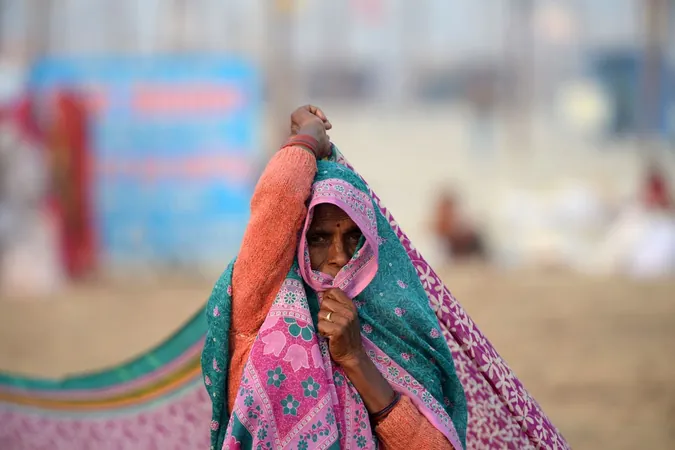
The Hidden Danger of Tight Saree Underskirts: Could It Lead to Cancer?
2024-11-06
Author: Ting
Introduction
In a startling revelation, medical professionals warn that tying the waist cord of saree underskirts too tightly could potentially lead to a condition ominously termed "petticoat cancer." This claim is backed by recent research published in the journal BMJ Case Reports, shedding light on the risks associated with traditional clothing practices for women.
The Research Study
The study details cases involving two women who developed skin cancer linked to the persistent pressure and friction caused by tightly tied petticoat cords. Doctors highlighted how this chronic irritation can trigger a chain reaction of skin ailments, resulting in chronic inflammation and, ultimately, skin cancer. This phenomenon, previously referred to as "saree cancer," is primarily attributed to the tightness of the waist cord, according to researchers, including Bhushan Madke from Jawaharlal Nehru Medical College in Maharashtra, India.
Case Studies
One significant case presented in the study involved a 70-year-old woman who sought medical attention for a painful, non-healing ulcer on her right flank. She revealed that she had been wearing a petticoat pulled tightly around her waist for years. Over a period that extended beyond 18 months, the wound failed to heal, and the skin in the affected area lost its pigmentation. Upon examination, samples from her skin revealed the presence of a "Marjolin ulcer," an aggressive form of skin cancer that often arises in areas of chronic irritation.
The woman shared her own experiences, stating, "I have been wearing a Nauvari saree, tightly wrapped around my waist, for most of my adult life. Six years ago, I noticed a small area of depigmentation on my right flank, which I initially dismissed.” As time passed, however, the area evolved into a chronic ulcer that severely impacted her quality of life, demonstrating the stealthy progression of this health risk.
Another alarming case involved a woman in her late 60s who suffered from an ulcer that persisted for two years. Like the first woman, she also donned a saree everyday, but in this instance, it was a tighter-fitting "lugda" without the traditional underskirt. Unfortunately, her condition progressed to a point where the cancer had metastasized to a lymph node in her groin.
Understanding Marjolin Ulcers
Research indicates that Marjolin ulcers can arise in various medical scenarios, such as chronic wounds, burnt areas, or even skin lesions from injuries. Though the precise mechanisms by which these ulcers turn cancerous remain unclear, there is a consensus that constant irritation and pressure can significantly increase malignancy risks.
Preventive Measures
To mitigate these risks, doctors strongly recommend opting for looser-fitting underskirts and clothing, especially for those with existing wounds. Persistent skin changes warrant close attention and prompt medical consultation to prevent dire consequences.
Conclusion
"It has been a psychologically and physically taxing journey," the 70-year-old woman reflected. "I hope my story raises awareness about the potential health risks associated with traditional clothing practices and encourages women to seek medical advice during any unusual skin changes." As women everywhere celebrate their cultural attire, the time has come to prioritize health alongside tradition. It’s crucial to be mindful of the risks hidden behind our garments and ensure that comfort and well-being are at the forefront of our choices.





 Brasil (PT)
Brasil (PT)
 Canada (EN)
Canada (EN)
 Chile (ES)
Chile (ES)
 España (ES)
España (ES)
 France (FR)
France (FR)
 Hong Kong (EN)
Hong Kong (EN)
 Italia (IT)
Italia (IT)
 日本 (JA)
日本 (JA)
 Magyarország (HU)
Magyarország (HU)
 Norge (NO)
Norge (NO)
 Polska (PL)
Polska (PL)
 Schweiz (DE)
Schweiz (DE)
 Singapore (EN)
Singapore (EN)
 Sverige (SV)
Sverige (SV)
 Suomi (FI)
Suomi (FI)
 Türkiye (TR)
Türkiye (TR)